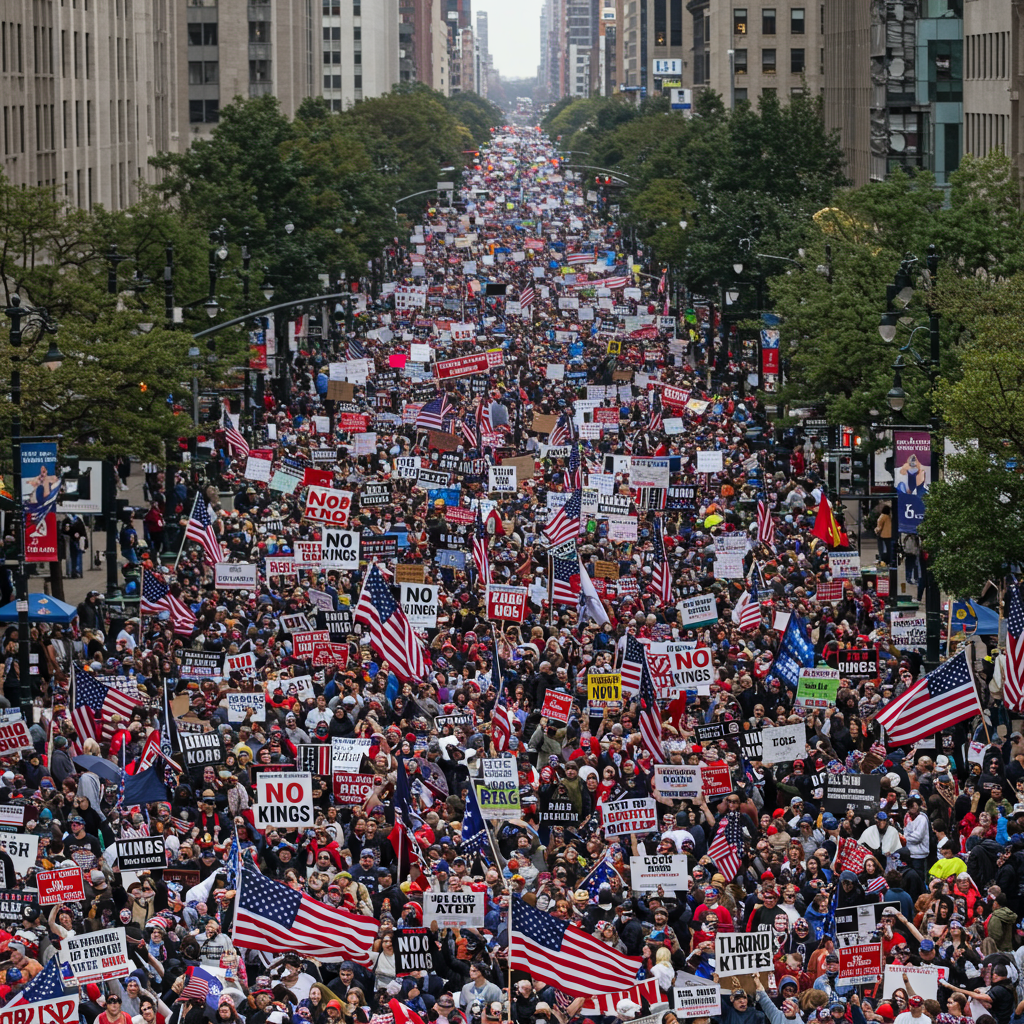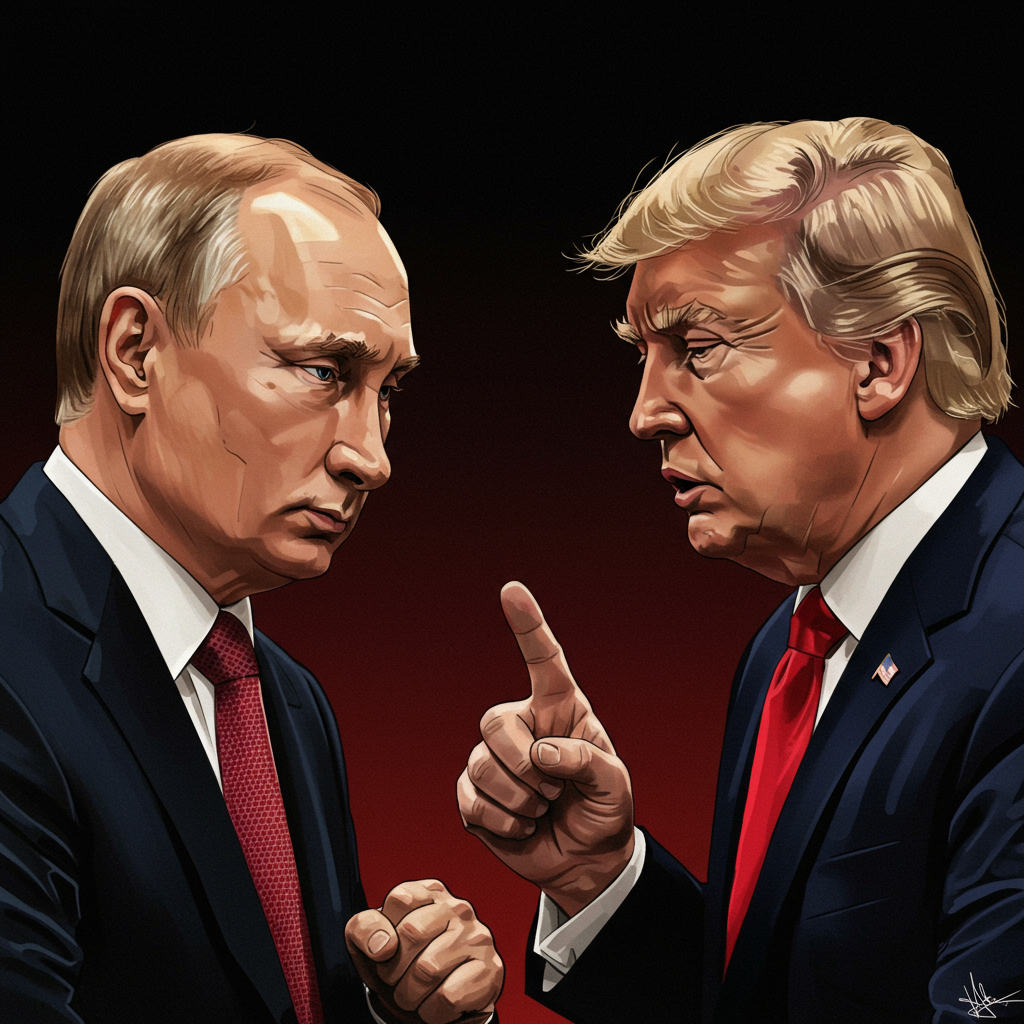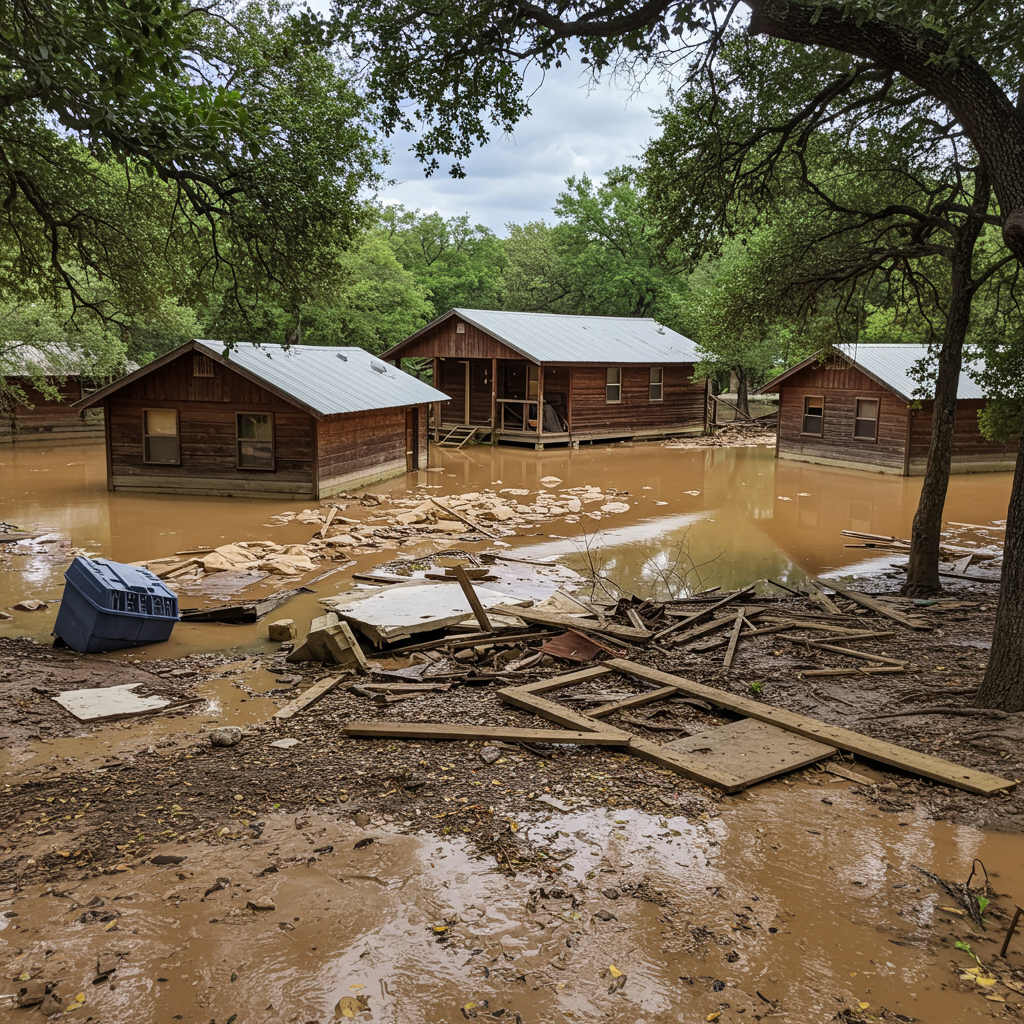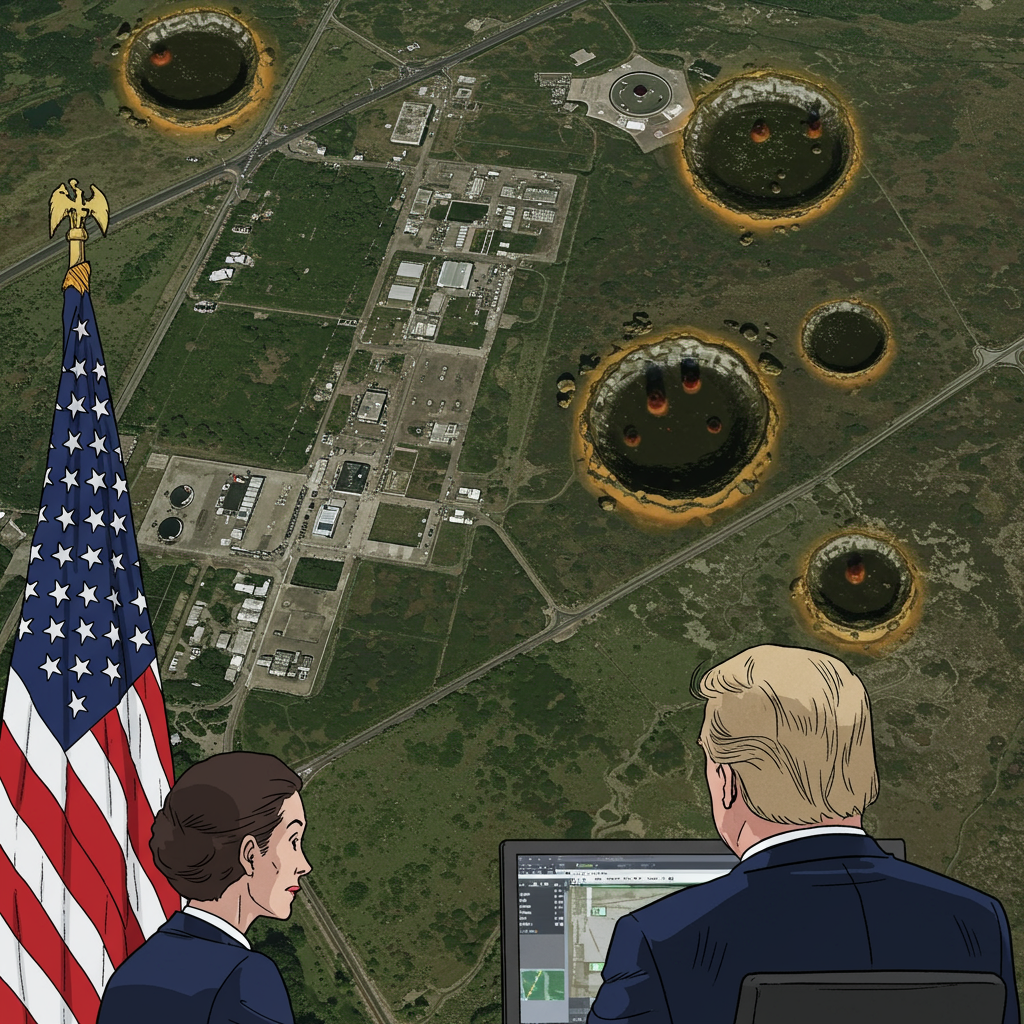Across the United States, an unprecedented wave of protests dubbed “No Kings” saw nearly seven million people take to the streets, demonstrating against President Donald Trump’s perceived authoritarian agenda. These massive nationwide rallies, held on October 19, 2025, underscored deep concerns about the state of American democracy and civil liberties. From major urban centers to quiet rural towns, citizens mobilized to voice their worries, making it one of the largest single-day demonstrations in U.S. history. This comprehensive look delves into the core grievances, the diverse voices of participants, and the political reverberations of this pivotal movement.
A Nation Mobilizes: The “No Kings” Movement Takes Hold
On a single Saturday, the “No Kings” movement galvanized an estimated seven million Americans in over 2,700 events across all 50 states, and even internationally. This extraordinary turnout reflected widespread anxieties following the Trump administration’s actions since his return to the White House in January 2025. Protesters articulated profound fears regarding the expansion of presidential power and what they viewed as a dismantling of democratic institutions.
Unprecedented Turnout Across the Nation
The scale of the “No Kings” protests was truly remarkable. Organizers reported nearly seven million attendees, far surpassing earlier demonstrations. New York City alone witnessed over 100,000 participants, with similar large gatherings in Washington D.C., Chicago, Los Angeles, and Austin. Even small pockets of “No Kings” protesters emerged along busy thoroughfares and in municipal parks across both traditionally red and blue states. This broad geographical reach highlighted a collective national sentiment that transcended political boundaries.
The Indivisible Project: Orchestrating a Movement
Behind these powerful demonstrations was the Indivisible Project, a grassroots organization committed to nonviolent action. They trained tens of thousands of individuals in safety and de-escalation techniques, a crucial effort amid growing political tensions. The “No Kings” rallies were framed as a patriotic defense of fundamental rights, directly challenging the narrative that such protests were “anti-American.” The movement sought to unify diverse voices under a clear banner: that America belongs to its people, not to any single ruler.
Why Millions Marched: Core Grievances Against Perceived Authoritarianism
The motivations for joining the “No Kings” protests were varied but converged on a central theme: the protection of American democracy. Participants voiced specific grievances concerning the Trump administration’s policies and executive actions, which they believed threatened the foundational freedoms of the United States.
Defending Democracy and the Constitution
A predominant concern among demonstrators was the perceived erosion of democratic norms and constitutional principles. Many, like retired government worker Peggy Cole, who traveled nearly ten hours from Flint, Michigan, for the Washington D.C. protest, felt that democracy itself was “at stake.” Senator Raphael Warnock, speaking in Atlanta, emphasized that the moment was about “the power in the people,” not “the people in power.” Protesters carried signs proclaiming “Democracy not Monarchy” and “The Constitution is not optional,” reflecting fears of executive overreach and a shift towards authoritarianism.
Confronting Immigration Crackdowns and Federal Overreach
The administration’s aggressive immigration policies and federal deployments were another major flashpoint. Demonstrators condemned mass immigration raids, the actions of Immigration and Customs Enforcement (ICE), and the deployment of federal troops into Democratic-led cities despite objections from state governors. In Los Angeles, where federal immigration raids had sparked previous protests, attendees like Gilberto Beas conveyed a clear message for ICE to cease their operations. Many highlighted the plight of immigrant families, calling for an end to deportations and emphasizing that “everyone has rights here.”
Protecting Public Services and Social Programs
Concerns over cuts to federal programs, particularly healthcare, resonated deeply with many protesters. Amid a government shutdown, federal workers, some furloughed, joined the rallies to protect public services. Anthony Lee, president of a National Treasury Employees Union chapter, described witnessing the “destruction” of government and public services as “scary.” Social workers like Elizabeth Nee observed direct impacts on vulnerable populations, noting the risk to unhoused individuals and Medicaid recipients. Senator Bernie Sanders, addressing the D.C. crowd, connected these issues to the “insatiable greed” of wealthy individuals benefiting from the administration’s policies.
The Fight for Free Speech and Dissent
Many participants felt that freedom of expression was under threat. Bobbie Castillo, attending her first protest in D.C. after traveling from Lincoln, Nebraska, expressed concerns about peacefully or safely expressing oneself “without fear of repercussions.” Bill Nye “The Science Guy” articulated this sentiment at the D.C. protest, stating that the administration “cannot tolerate dissent” and that “our free speech is frightening” to them. Protesters loudly cheered and chanted slogans such as, “This is what democracy looks like,” reinforcing their commitment to open dialogue and political engagement.
Voices from the Front Lines: What Protesters Had to Say
The “No Kings” rallies were characterized by a diverse array of personal stories and creative expressions of dissent, all united by a deep-seated love for America and a determination to safeguard its democratic future.
Personal Stakes and Patriotic Defiance
For many, protesting was a deeply personal act of patriotism. Joan Press in Atlanta affirmed, “We’re a democracy. And that, in a democracy, people can stand up and voice their opinions.” A New York demonstrator, protesting since the 1960s, articulated a sense of loss and fear, feeling that hard-won rights were being “taken away” and that “our entire democracy is being threatened.” Uriah Kitchen of Delaware simply stated that participants were there “to protect America.” These voices countered accusations of being “anti-American,” asserting their actions were driven by profound love for their country.
Creative Expressions of Peaceful Resistance
The protests often adopted a festive and whimsical atmosphere, serving as a powerful counterpoint to the tense political climate. Many wore yellow, a symbol of unity and nonviolent resistance. Others donned elaborate costumes, including inflatable chickens, frogs, dinosaurs, lobsters, and even a Statue of Liberty. A Los Angeles protester in a unicorn costume noted that it’s “hard to call something a war zone, when you look at something and it’s just a block party.” This creative approach highlighted the peaceful nature of the demonstrations, challenging portrayals of protesters as “violent radicals.” The iconic Donald Trump “baby blimp” also made an appearance, adding a touch of satirical humor.
Political Reactions and Counter-Narratives
The widespread “No Kings” protests elicited sharply contrasting reactions from across the political spectrum, underscoring the deep ideological divisions within the country.
White House Dismissal and GOP Criticisms
The Trump administration and many Republican officials largely dismissed or condemned the protests. President Trump himself, while rejecting the “king” moniker, provocatively posted AI-generated videos depicting himself as a monarch on Truth Social. White House economist Kevin Hassett dismissed the rallies as “misguided” and making “no sense.” Republicans, including House Speaker Mike Johnson, frequently labeled them “hate America” rallies or the work of “violent left-wing radicals” and “Antifa-linked” groups. Despite these accusations, many cities, including New York and Portland, reported peaceful protests with no arrests. Some GOP governors, like those in Texas and Virginia, even activated National Guard troops in anticipation, though events largely unfolded without major incident.
Solidarity from Progressive Leaders
In stark contrast, progressive political figures expressed strong solidarity with the protesters. Senator Bernie Sanders, speaking in Washington D.C., forcefully countered the “hate America” label, declaring, “We’re not here because we hate America, we’re here because we love America.” Senator Elizabeth Warren in Boston called the protests “deeply American” and an act of “patriotism.” Senator Chuck Schumer marched in New York City, and Illinois Governor JB Pritzker noted Trump’s requests for National Guard deployment for immigration enforcement as concerning. These leaders validated the protesters’ concerns and celebrated the historic turnout as a testament to democratic engagement.
Global Echoes: International Support for the Movement
The “No Kings” movement extended beyond U.S. borders, with solidarity demonstrations occurring across Europe in cities like Berlin, Madrid, Rome, and London. Hundreds gathered outside the U.S. embassy in London, while similar scenes unfolded near the U.S. consulate in Toronto, Canada. These international demonstrations underscored a global concern regarding the state of American democracy and provided a testament to the worldwide impact of the Trump administration’s policies.
Frequently Asked Questions
What were the primary motivations behind the “No Kings” protests?
The “No Kings” protests were primarily motivated by widespread concerns over President Donald Trump’s perceived authoritarian agenda and executive overreach since his return to the White House in January 2025. Key grievances included threats to democratic institutions, aggressive immigration policies such as ICE raids, the deployment of federal troops to cities, proposed cuts to federal programs like healthcare, and what many saw as threats to free speech and dissent. Participants felt compelled to defend the U.S. Constitution and ensure that power remained with the people, not concentrated in the executive branch.
How extensive were the “No Kings” protests, and where did they take place?
The “No Kings” protests were exceptionally extensive, with nearly seven million people participating in over 2,700 rallies across all 50 U.S. states on October 19, 2025. This made it the largest single-day nationwide demonstration in U.S. history. Major cities like New York City (over 100,000 participants), Washington D.C., Chicago, Los Angeles, and Austin saw significant gatherings. However, smaller protests also occurred in rural towns and along busy thoroughfares, demonstrating a broad geographical reach. Solidarity demonstrations also took place internationally in cities across Europe and Canada.
What was the official and political response to the “No Kings” demonstrations?
The response was sharply divided. The Trump administration and many Republican officials largely dismissed or condemned the protests, labeling them “hate America” rallies and accusing participants of being “violent left-wing radicals” or “Antifa-linked.” President Trump himself posted AI-generated videos depicting himself as a monarch, directly countering the protest’s theme. Conversely, progressive leaders like Senators Bernie Sanders, Elizabeth Warren, and Chuck Schumer expressed strong solidarity, praising the turnout as deeply patriotic and a defense of democracy. Despite Republican concerns about potential unrest and the activation of National Guard troops in some states, the protests were overwhelmingly peaceful, with many police departments reporting no arrests.
Conclusion: A Defining Moment in American Democracy
The “No Kings” protests of October 2025 represented a significant outpouring of public sentiment, highlighting profound anxieties about the trajectory of American democracy. Millions of citizens, unified by a desire to protect constitutional principles and civil liberties, sent an unequivocal message: that the nation’s power resides with its people, not with any single leader. This historic mobilization, characterized by both widespread participation and largely peaceful demonstration, stands as a powerful testament to the enduring spirit of democratic engagement in the face of perceived threats. It underscores a deeply polarized but passionately engaged populace, keenly aware of the stakes for the future of the United States.




